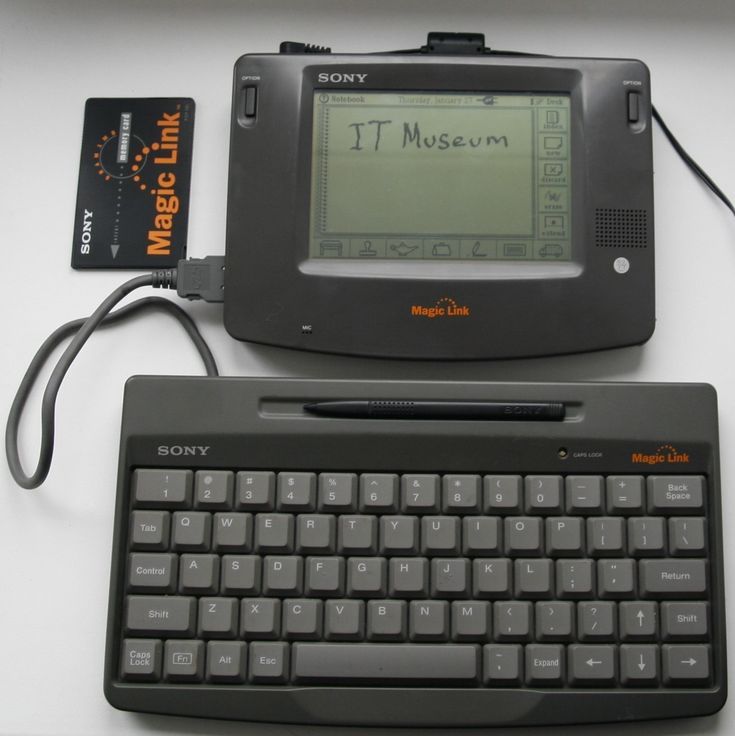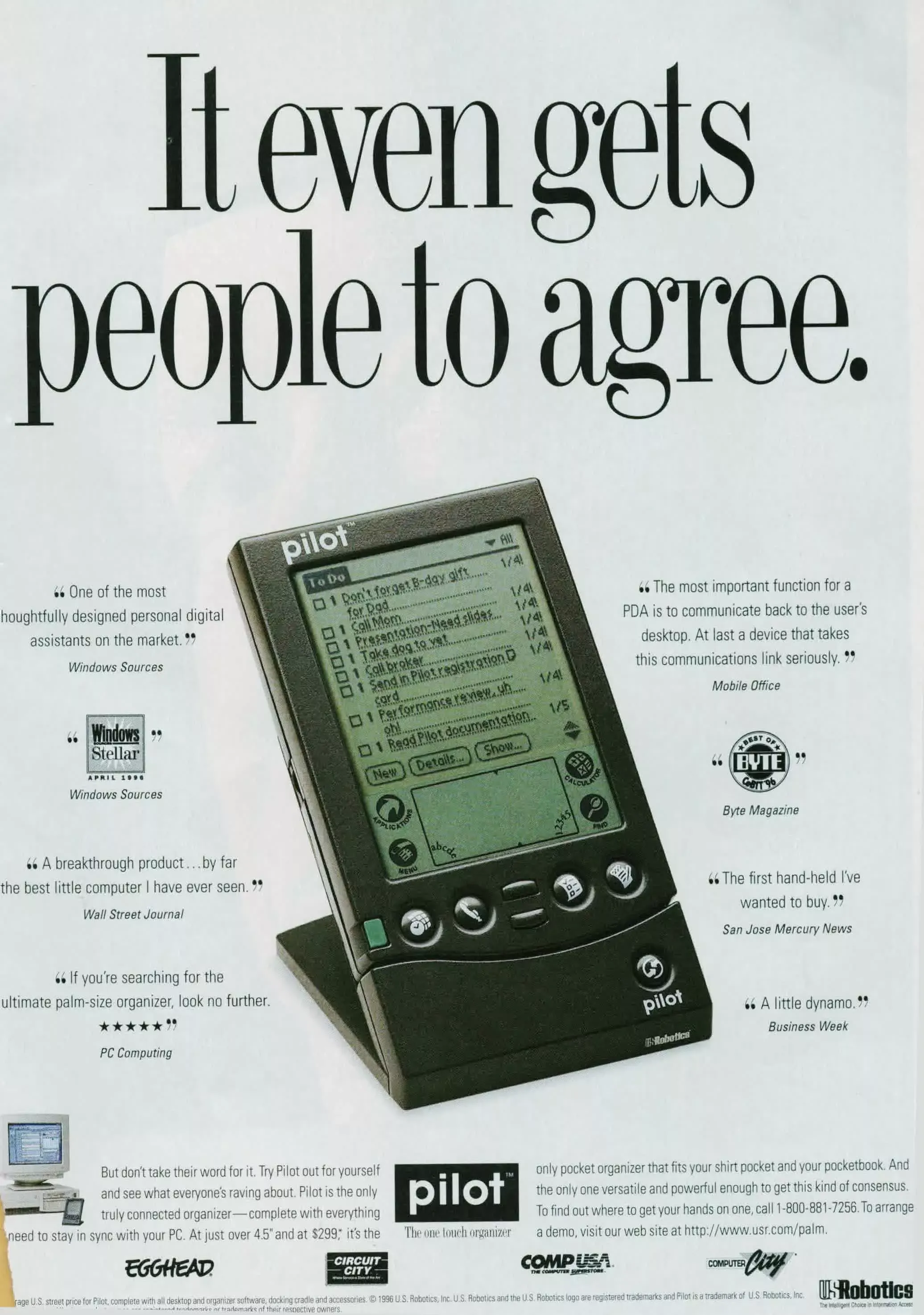a tiny computer, a phone,
the very personal object.
it must be beautiful.
it must offer the kind of personal satisfaction,
that a fine piece of jewelry brings.
it will have a perceived value,
even when it is not being used.
it should offer
the comfort of a touchstone,
the tactile satisfaction of a seashell,
the enchantment of a crystal.
once you use it, you won’t be able to live without it,
it’s just not another telephone.
it must be something else.
~ Marc Porat, CEO of General Magic
I heard this in the General Magic documentary a few weeks ago and I haven’t been able to stop thinking about it since. Not because it is beautiful (it is), but because of the cautionary tale that it tells to consumer technology companies today.
Between 1990 and 1995, General Magic spent through $96 million building their vision. The founding team, Marc Porat with Bill Atkinson and Andy Hertzfeld (both architects of the original Macintosh), were technology idols who attracted Silicon Valley’s brightest minds. By 1994, they’d also assembled the General Magic Alliance: Sony, AT&T, Motorola, Matsushita, and Philips betting collectively on their vision.
At General Magic, they pioneered technologies which we now take for granted: the predecessor to USB, early touchscreen interfaces and the first mobile app ecosystem. In 1994, they launched the Sony Magic Link with their fun, skeuomorphic Magic Cap OS. The tech world held its breath.
They sold just 3000 units over 6 months.

The Sony Magic Link running Magic Cap
Meanwhile, two years later, Jeff Hawkins launched the Palm Pilot. A neuroscientist by training, Hawkins carried a wooden block carved to fit in his shirt pocket, to test how people actually interact with handheld devices.
While General Magic was engineering the future, Hawkins was obsessing over the present: how often would someone pull this thing out? What would they reach for it to do? His insight was that people didn’t want a handheld device that was a computer, they wanted a handheld device that was an extension of their computer.
This shaped everything. The Palm Pilot became a handheld companion device which used “hotsync” to pull calendar events and contacts through a cradle from a PC. It had a 30 day battery life, and did exactly 4 things well: calendars, contacts, to-do lists and notes. By 2000, Palm had captured 76% of the PDA market with 6.7 million units sold.
The contrast is stark: Palm succeeded where General Magic failed by focusing on how people act in the present, rather than how people should act in the future.
Palm cost $299 and synced your calendar. Magic Link cost $800 and promised to change your life.
General Magic’s key mistake was that they fell in love with their own mythology. They drank their own Koolaid. While both General Magic and Palm Pilot were directionally correct about people’s desire to retrieve information on the go, General Magic built an impractical solution to the problem while chasing the dream of a future which wasn’t to arrive until a decade later. The unfortunate part is that by chasing that dream, they wrote themselves out of it.

A classic Palm Pilot magazine ad
the minimal ✨magical✨ device
Fast forward to 2007. The iPhone succeeded where General Magic failed thirteen years earlier, not just because the technology was more ready, but because Jobs understood that users don’t adopt paradigm shifts. They adopt better versions of existing fundamental behaviours. And not just marginally better ones, but drastically better ones.
Jobs understood that the killer app for mobile computing came down to the human desire for entertainment and connection. That’s why the iPhone launched as an MP3 player, a phone and an internet communications device. The last one being something that Palm missed, which ultimately ended up in Palm getting acquired by HP at a share price 94% lower than its peak.
But here’s the key: in focusing on the core features, Jobs built the minimum ✨magical✨ device. It didn’t matter that the iPhone had a crappy touch screen, no Copy/Paste, no 3G, no App Store. It mattered that people could browse the web on the go, in the best way possible. When you put people’s latent needs into a product, you get an iconic device that feels like magic.
general magic disease
What’s ironic is that General Magic ignored competition (like Palm) who were creating real cultural change around them. When you build the impression of being visionary, you stop thinking “what users actually do” and start thinking about what “users should do”.
I call this general magic disease, being so in love with your own narrative that you stop seeing reality. We watch the General Magic documentary today and we recount the tragedy of those who saw the future too soon. But, General Magic wasn’t early. They were wrong in all the ways that mattered. Wrong about what people cared about at the time. Wrong about culture. It doesn’t count to be directionally correct about the future, any sci-fi writer can do that. What counts is finding the very specific path through which technology comes to change our day-to-day lives.
And sadly, I see general magic disease all over the Valley today.
In 2024, Humane raised $230 million to liberate us from our iPhones. The Humane AI Pin projected a laser display onto your hand, responded to AI voice commands and was marketed as the panacea for screen addiction. The battery lasted for 2 hours, it heated up dangerously, and basic tasks took 10 seconds. MKBHD called it the “worst product he’d ever reviewed”. And guess what, they were acquired by HP.
someone explain to me why HP acquires everyone??
Look, the directionally correct statement is that AI is changing the way we all live and work. No one gets credit for that (except OpenAI ig). The real questions are:
- What do people tolerate today that they don’t have to?
- What human desire has always existed but was impossible to fulfil until now?
- What are new values and desires which are emerging today?
Leave everything else to the sci-fi writers.
Related Notes:
good-products-dont-change-the-world manufactured-normalcy